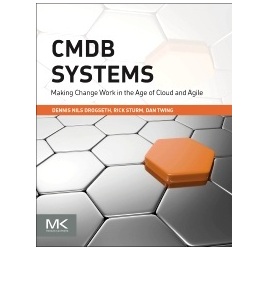Just like in the world at large, there's no absence of political opinions in high tech, only where we live and work those opinions are, appropriately, often directed at technology trends. But as terms and ideas sometimes become first sanctified and then damned, just as they so often do in national media, what usually gets lost in the shuffle are the real nuances of what's happening and why.
One provocative example, the configuration management database (CMDB), along with its more federated companion, the configuration management system (CMS), has been bathed in a deluge of negative opinions from all fronts — industry experts, vendors, and IT professionals. But from what recent EMA research on analytics, ITSM performance and other areas is indicating, those negative views seem to be missing out on a real undercurrent of truth — that CMDB/CMS alignments, whatever their defects, strongly skew to success in terms of overall IT progressiveness and effectiveness. This can be especially true when discovery and dependency mapping (DDM) solutions are included as part of the mix, often for more effective real-time currency. And ideally the hand-off there is bi-directional, as the CMDB/CMS can add valuable context to DDM insights.
With that in mind, and with a history in CMDB consulting to build on, EMA is embarking on research currently titled Service Modeling in the Age of Cloud and Containers. The goal is to set the record straight — maybe not once and for all — but at least in terms of what to expect in 2020. To do this we are looking at a global respondent base of 400 including North America, Europe and Asia. (Data collection is just underway as I'm writing this.)
Who's on First?
One of the goals will be to granularly evaluate the prevalence of CMDB, CMS and DDM deployments across a wide variety of contexts:
Which are the most prevalent?
Which are most in demand?
How many IT organizations see their CMDB as evolving into a CMS?
What are the realized synergies between DDM and CMDB/CMS deployments, and how do these translate into overall success and effectiveness (or for that matter ineffectiveness) across a wide range of use cases?
What's the Use?
We're being quite serious about that "wide range of use cases" for trending and comparisons. The overall list includes:
Asset management
Financial optimization
Performance and availability management
Behavioral analysis
Forecasting prediction
Application lifecycle management
Event troubleshooting and remediation
Change management
Capacity optimization
Cloud migration/optimization
DevOps/release management
DevOps/preproduction provisioning
Security/fraud/risk
Security/compliance
SecOps (integrated security and operations)
IoT-related use cases
IT governance for OpEx efficiencies
Routine service desk requirements (onboarding, etc.)
IT transformation
Digital transformation
We're also bringing AIOps into the picture, to evaluate how AIOps integrations are being impacted by these adoptions. In fact, the overall relevance of service modeling to IT analytics investments, and vice versa, is a core focus of the research.
Cloudy Weather
As suggested in the title, the move to support the dynamic requirements of cloud is another chief area of interest. For instance, we'll be looking at:
Public cloud: VM-specific data
Public cloud: containers
Public cloud: microservices
Private cloud: VM-specific data
Private cloud: containers
Private cloud: microservices
Infrastructure as code (IaC)
Each of these environments will be addressed, along with a wide range of other data sources — from inventory and discovery tools, to asset data, to spreadsheet data, to IoT, just to name a few — all with an eye to what's most pervasive, what's most needed and what is most likely to require real-time currency.
Success - What's Needed and What's Lacking
Along with dimensions such as administrative overhead, time spent keeping data current, and roles associated with "owning" deployments, we'll also be trending on success rates from various perspectives. And we'll be examining what's lacking most in current technologies, brands and products for service modeling, as well as what IT organizations see as the most sought-after functional priorities in CMDB, CMS and DDM adoptions.
Finally, we'll be getting advice on going forward — what's top of mind for forging ahead with more complete service modeling investments?
EMA will be hosting a webinar on all this and a lot more on October 8. With that in mind, I'll be writing another blog well in advance to share some of the data highlights, and let you know how to sign up. But if you have any questions in the meantime, please feel free contact me at drogseth@emausa.com. I welcome your questions, thoughts and views.
The Latest
A vast majority (89%) of organizations have rapidly expanded their technology in the past few years and three quarters (76%) say it's brought with it increased "chaos" that they have to manage, according to Situation Report 2024: Managing Technology Chaos from Software AG ...
In 2024 the number one challenge facing IT teams is a lack of skilled workers, and many are turning to automation as an answer, according to IT Trends: 2024 Industry Report ...
Organizations are continuing to embrace multicloud environments and cloud-native architectures to enable rapid transformation and deliver secure innovation. However, despite the speed, scale, and agility enabled by these modern cloud ecosystems, organizations are struggling to manage the explosion of data they create, according to The state of observability 2024: Overcoming complexity through AI-driven analytics and automation strategies, a report from Dynatrace ...
Organizations recognize the value of observability, but only 10% of them are actually practicing full observability of their applications and infrastructure. This is among the key findings from the recently completed Logz.io 2024 Observability Pulse Survey and Report ...







